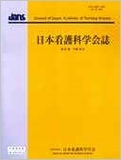Japanese
English
- 販売していません
- Abstract 文献概要
- 参考文献 Reference
- サイト内被引用 Cited by
要旨
目的:しびれている身体がどのように経験されているのかを,“他人みたい”と表現されることに着目し記述的に開示する.
方法:Merleau-Pontyの身体論を思想的背景とした現象学的手法を用い,中枢神経障害によるしびれを経験していた4名から得た参加観察記録を分析,記述した.
結果:他人みたいという違和感を含む経験は,しびれにより生じるからだの手応えの変容,日々の行為可能性が保証されない不安定さ,自ずと動いていた自分のからだではなく,自分のからだを自分で指示するという,指示し動かすからだでの日常生活から成っていた.
結論:しびれている身体は,“私という身体”としてここに居るという,身体として感じていた確かさが揺らぐ経験であった.生活援助を通して患者の身体経験に関心を寄せ身体について共に考えることで,患者にしかわからないとされていたしびれを,共有可能な次元に近づける可能性があることが示唆された.
The purpose of this study is to reveal descriptively how a numb body is experienced, proceeding from the fact that it is expressed as “like living in someone else's body.” I employed phenomenological methodology conceptually grounded in Maurice Merleau-Ponty's body theory to analyze and describe participatory observation records obtained from four participants experiencing numbness due to disorders of the central nervous system. The results showed that experiences involving the dysphoric sense of living in someone else's body comprised: changed bodily responses caused by the numbness; a sense of instability due to the capacity to act not being guaranteed from one day to the next; and living daily life in a body that was no longer their own spontaneously moving body, but instead a body that was instructed to move, requiring them to issue instructions to his or her own body. This study concludes that, whereas the participants had previously felt a physical certainty that they existed as an embodied self, body numbness was an experience that caused that certainty to waver. It suggests that through assisting patients with daily routines one can take an interest in their physical experiences and think together with them about the body. In this way it is possible to bring the numbness that was previously thought to be known only to the patient closer to a level at which it can be disclosed to others.
Copyright © 2017, Japan Academy of Nursing Science. All rights reserved.


